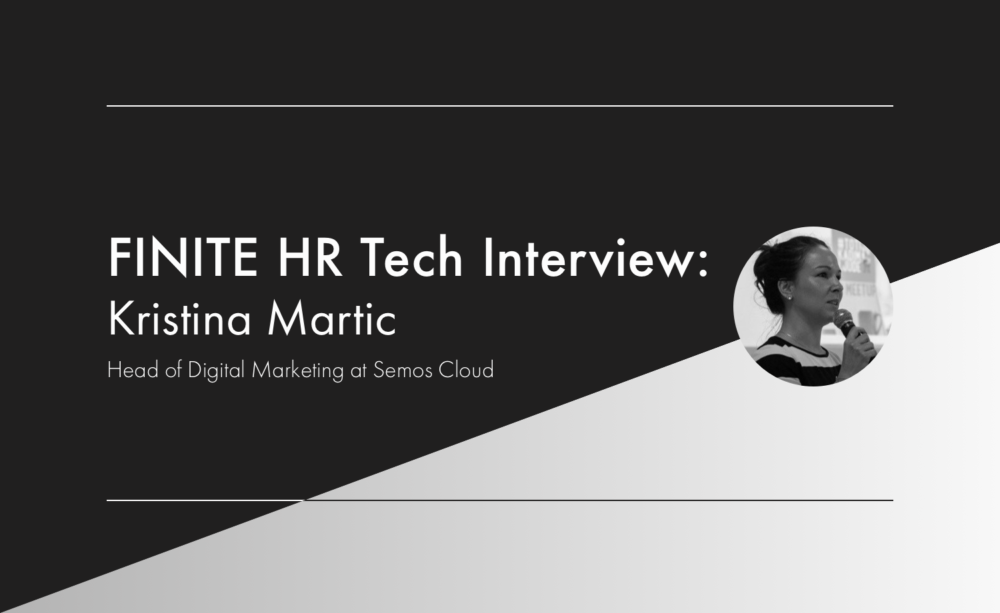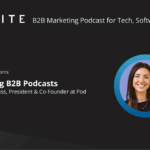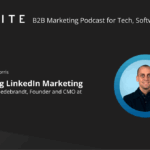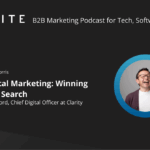The first edition of the FINITE HR Tech Interview Series will help you strengthen your understanding of HR Tech, and learn step-by-step how to build and manage an HR Tech marketing strategy from nothing.
HR Tech businesses require a specialised marketing strategy to be successful, as it targets a large but varied market. HR Tech is relatively new when it comes to digitalisation compared to other departments like marketing and finance. It therefore poses unique challenges, such as a highly competitive landscape. This strong competition makes HR Tech an exciting industry for B2B marketers to navigate.
Kristina Martic is a leading HR Tech marketer, currently the Head of Digital Marketing at Semos Cloud – an all-in-one employee success suite.
Read the interview to learn:
- How an HR Tech marketing strategy differs from those of other B2B tech industries
- The first steps you should take when building an HR Tech marketing strategy
- The key ingredients to maintaining a strong HR Tech marketing strategy
- The biggest challenge HR Tech marketing is currently facing, and how to tackle it
FINITE: Hi Kristina! Firstly, could you tell us more about your past experience in HR Tech and about your current role as Head of Digital Marketing at Semos Cloud?
Kristina: Hi FINITE! Of course. In 2017, I joined an HR Tech startup called TalentLyft – a comprehensive ATS and Recruitment Marketing solution. It’s an interesting story as I sent an open application after which the two co-founders called me to come and build a marketing strategy from zero. Even though I knew this was going to be challenging, I didn’t hesitate for a minute.
There is no better feeling than when you see that you make a great impact on a company, and when you know that you are an important driver for its growth. At TalentLyft I fell in love with the HR Tech industry, and I knew I was going to pursue my career in this field.
After more than 2 years in TalentLyft, I was approached by Semos Cloud’s Head of Customer Success to join the team and do the same thing – build a marketing strategy from zero. As Semos Cloud is an innovative Employee Experience Platform, I saw this as an opportunity to grow my career further in the HR Tech field.
Today, I am responsible for planning, implementing, and managing Semos Cloud’s digital marketing strategy. I participate in product management activities, and am responsible for managing relationships with our partners.
FINITE: How exciting! How does an HR Tech marketing strategy differentiate from those of other B2B tech industries?
Kristina: I would say that one of the biggest differences is the fact that digital transformation in HR started happening later than digitalisation in marketing, sales, and some other departments. Even though organisations have started investing more in HR technology, we still need to educate our audience about its benefits.

For an ordinary HR professional, understanding the intricacies of new technology can seem a bit daunting and this is why perfecting company messages is key.
This is especially true for startups launching an innovative technology that doesn’t yet exist on the market. Before convincing people to buy, your marketing strategy should mostly focus on the challenges that your solution is solving.
I remember, when I first joined TalentLyft most people didn’t even know about what Recruitment Marketing is and how it can improve employers’ Talent Acquisition and Employer Branding efforts. Instead of just trying to promote the product itself, we first had to educate our audience through content, webinars, and similar marketing initiatives.
Making a clear, concise, and understandable use-case for your target audience is the key!
Another big difference lies behind budgets which were traditionally much lower in HR departments compared to other business divisions.
However, this trend has been changing in the past few years. Organisations are becoming aware that people are their biggest and most valuable assets, and HR professionals are becoming important strategic business partners. For that reason, even SMBs have started to invest more in HR technology, and this trend will continue to grow.
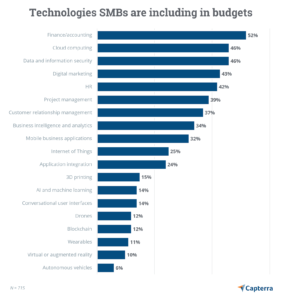
As Capterra puts it:
“It comes as no surprise that more and more SMBs are setting aside precious funds for HR software systems to help with everything from tracking employee hours to automating payroll runs and improving the experience for job applicants.”
Still, it is crucial that you properly position your technology in the market. If you are targeting SMBs, you have to be aware of their budget limitations and set your price accordingly. As your technology gets more advanced, you can adjust your pricing plans or offer multiple pricing options.
FINITE: Could you please outline the first steps you take when building an HR Tech marketing strategy?
Kristina: Sure I can.
1. Know your buyer persona and their challenges
This may seem like an easy task, but it’s not. HR Tech buyer personas can be very different depending on the company size, department, geographic location, organisational structure, and other criteria.
For example, after a year of studying buyer personas for Semos Cloud, we now know that our buyer personas can be from HR, IT, Digital Transformation, and Innovation departments.
This is true for every B2B tech company. Without knowing who your buyers are and what their struggles are, it is very unlikely that your marketing strategy will be successful.
However, the most important point is that your software is not a one-size-fits-all solution. In other words, define your niche market that is most likely to find your software valuable.
Here is a good example of how to define an HR buyer persona.
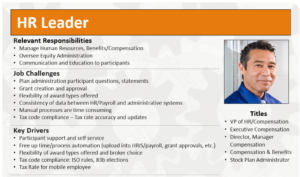
2. Start writing content even if your product is not completely ready
It’s never too early to start writing content in order to boost your website traffic. Even though driving organic traffic takes some time, this is the most sustainable and scalable way to build brand awareness, generate high-quality leads, build trust among prospects, and drive sales.
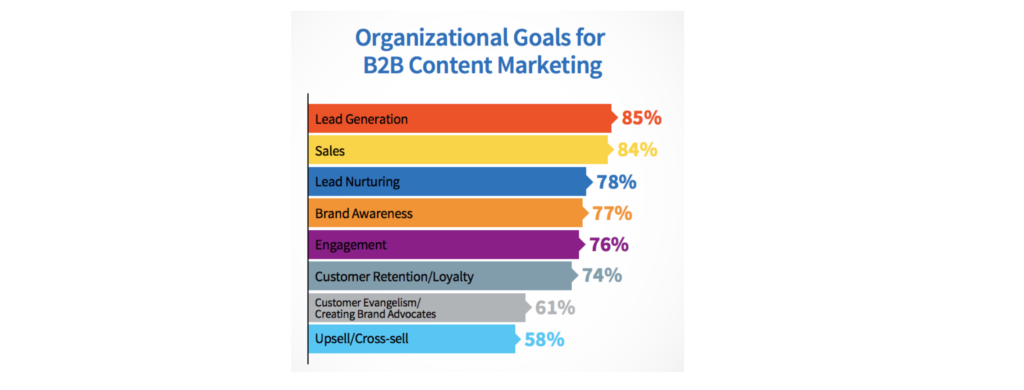
However, there is a big mistake that I have seen many companies do. They write content based on their own ideas or thoughts about what may be interesting to their audience. Instead, this process should be more data-driven.
In other words, you should do comprehensive keyword research in order to find keywords relevant to your buyer persona (in the next section I will list a few great keyword research tools). Finding relevant keywords with decent search volume is the very first step in creating SEO optimized content that ranks high on Google search results and drives people to your website.
💡 Extra tip: Another tip I can give you based on my own experience in TalentLyft is finding a niche type of content that isn’t so hard to create but has great potential to drive a lot of website traffic.
In TalentLyft, we created a library of 500 job description templates – something that every recruitment professional uses almost on a daily basis. For many of those, we managed to rank on the first page on Google and drive a vast amount of daily website visitors.
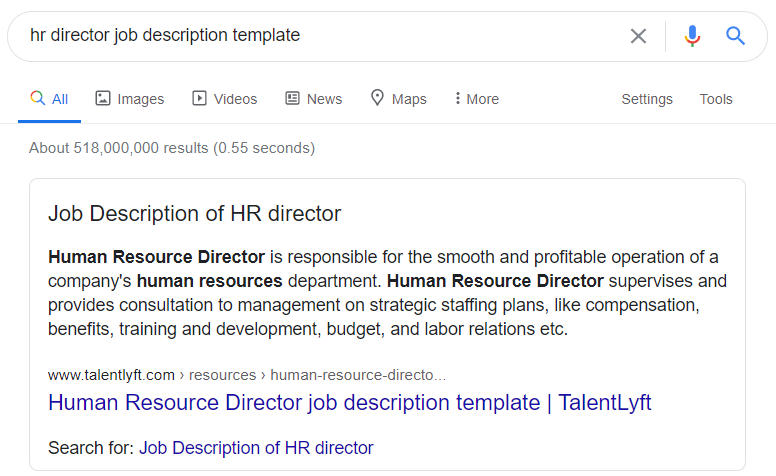
The best way to prove the power of content is the fact that, in TalentLyft, we managed to go from almost no website traffic to 500,000 monthly website visitors in just 2 years.
Impressive isn’t it?
3. Implement must-have marketing tools
Digital marketing can’t be done right without the right set of tools and technology. The 3 solutions you should implement at the very beginning are tools for:
- Keyword research
- Lead generation and lead nurturing
- Social Media management
At the very beginning, you may have to look for more affordable or even free tools. You can consider Buffer for social media, Wishpond or Mailchimp for lead gen and lead nurturing, and Keywords Everywhere or Google Keyword Planner for keyword research.
As your company grows, consider switching to more comprehensive solutions such as HubSpot for creating content, social media scheduling, lead generation, CRM, and many more.
Additionally, SEMRush is one of the best SEO and keyword research tools worth investing in.
With SEMRush, you can do a detailed analysis of what your competition is writing about, and track your keyword and traffic performance.
Here is a sample report from SEMRush for Semos Cloud’s content performance in the United States. (our content focuses on HR professionals in the field of employee recognition and total rewards).
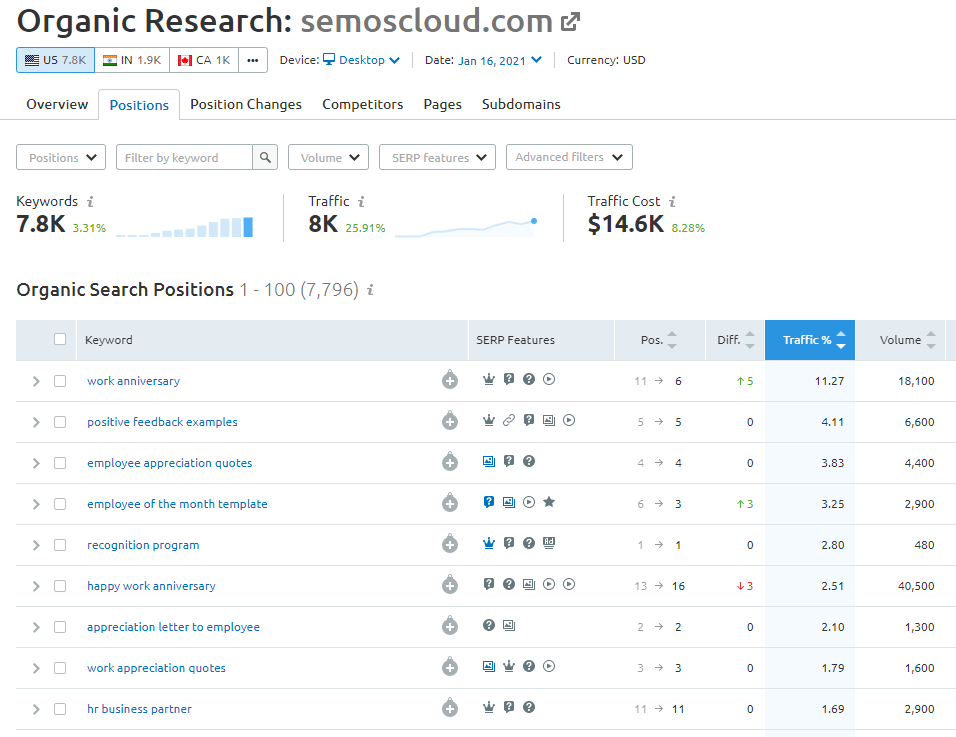
💡 Extra tip: Some solutions have special offers and pricing plans for startups. Therefore, when looking for a solution to buy, make sure that you get the best value for your money. Here is an example from HubSpot.
4. Consider focusing on local businesses first
There are many businesses that like to buy software from local providers. Some of them do so to support the growth of local startups, some just like the fact that they can have in-person meetings with the vendor, some prefer solutions that support their local language, and some see it more convenient when it comes to end-user support.
If it makes sense for your business, consider building a local community of HR professionals.
💡 Extra tip: Organise small events, meet-ups, or webinars to share your expertise, educate your audience, and build trust among potential buyers. This approach can go a long way in growing your business locally, which will ultimately lead to more international customers.
5. Love LinkedIn
LinkedIn is a perfect marketing and sales channel for every HR Tech vendor. HR professionals across the world spend their time on LinkedIn every single day.
Hence, leveraging LinkedIn in your marketing strategy is not an option, it’s a must!
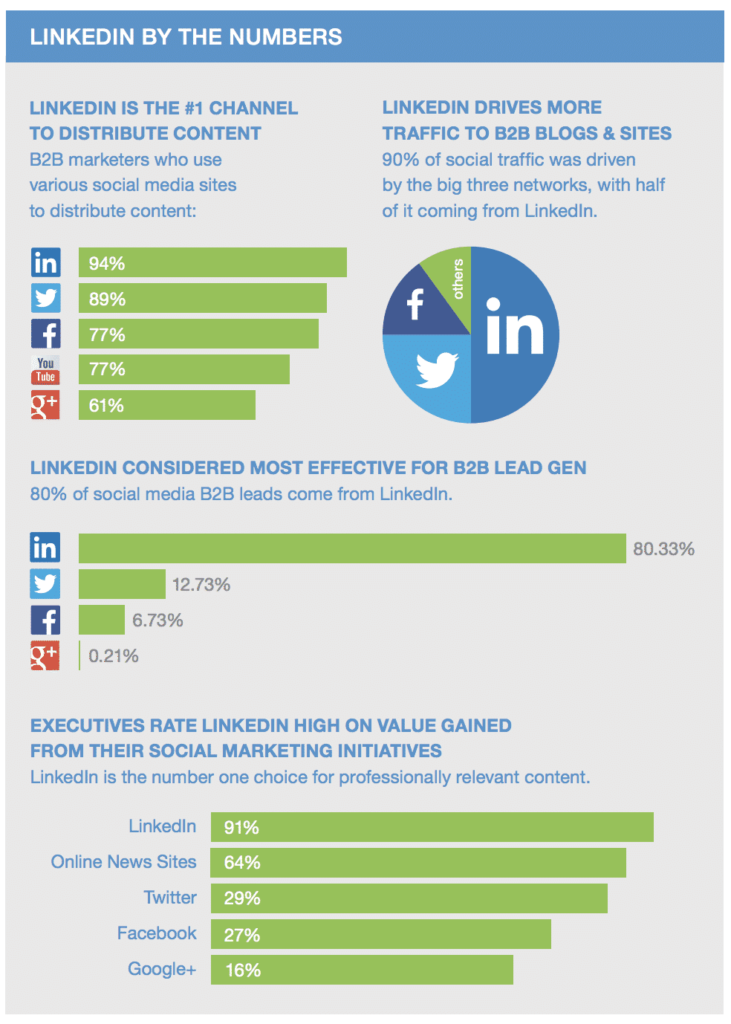
However, as an HR Tech marketer, you really need to spend time building your own LinkedIn audience. If you know who your buyer persona is, start connecting with them as soon as possible.
Building a personal audience is much easier and faster than growing your company’s followers. But the more active you are on LinkedIn, the more people will associate you with your employer.
💡 Extra tip: Don’t forget that you can invite your connections to follow your company’s LinkedIn page.
6. Leverage other free HR communities
There are many free HR communities and websites you can use to amplify your content further. For example, I am a member of tens of HR-related groups on LinkedIn that I used to use to drive more traffic to our website.
Here are some of them:
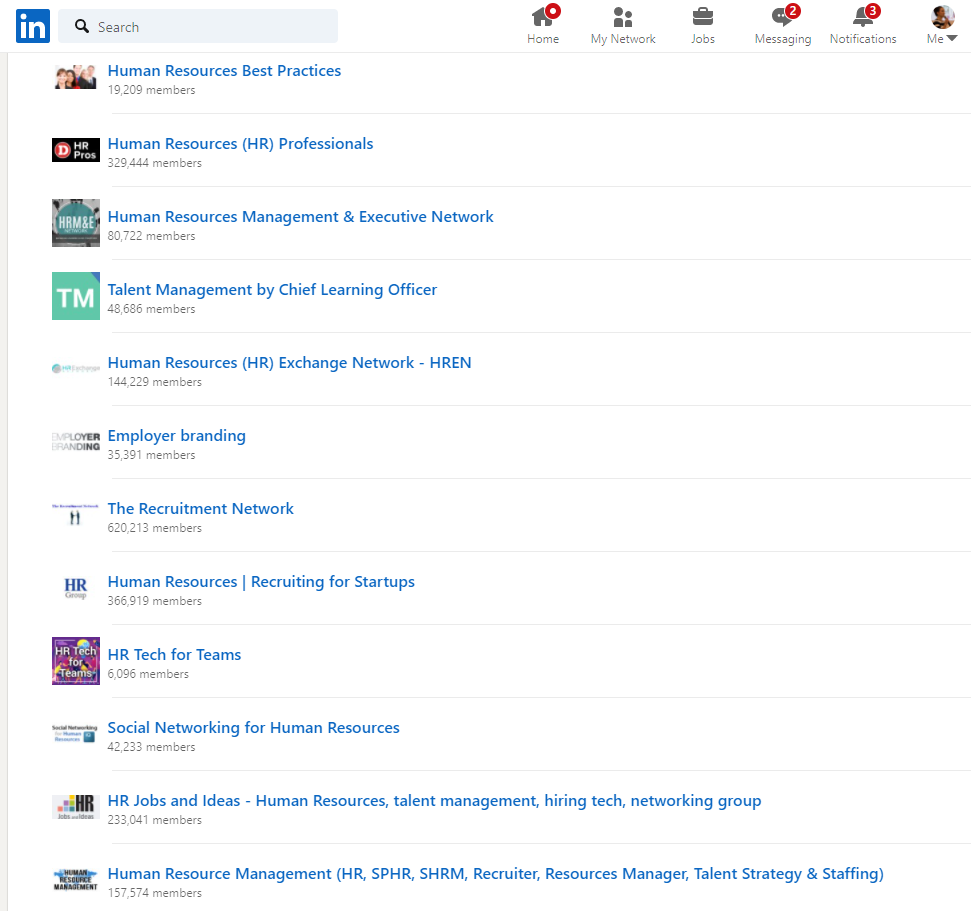
Besides LinkedIn, there are great Slack groups where HR professionals like to discuss their challenges, share ideas, and exchange best practices. People Geeks, Hacking HR, PeoplePeople, HRtoHR are just a few of them.
Join them and discover how you can leverage those channels to engage with your audience.
Last but not least, search for free content syndication and guest blogging HR websites with high authority. HR.com is an example of a website where you can post your content for free.
💡 Extra tip: If your city doesn’t already hold Hacking HR events, you can leverage this great community. Check out their website to see how you can become a Hacking HR partner and start a local Hacking HR chapter.
7. Get on trusted review sites
Creating a profile on free tech reviews sites such as G2, Capterra, GetApp, and Software Advice is free. Since review sites are one of the most trusted sources of information for new buyers, it is worth creating an appealing profile and start getting users’ reviews ASAP.
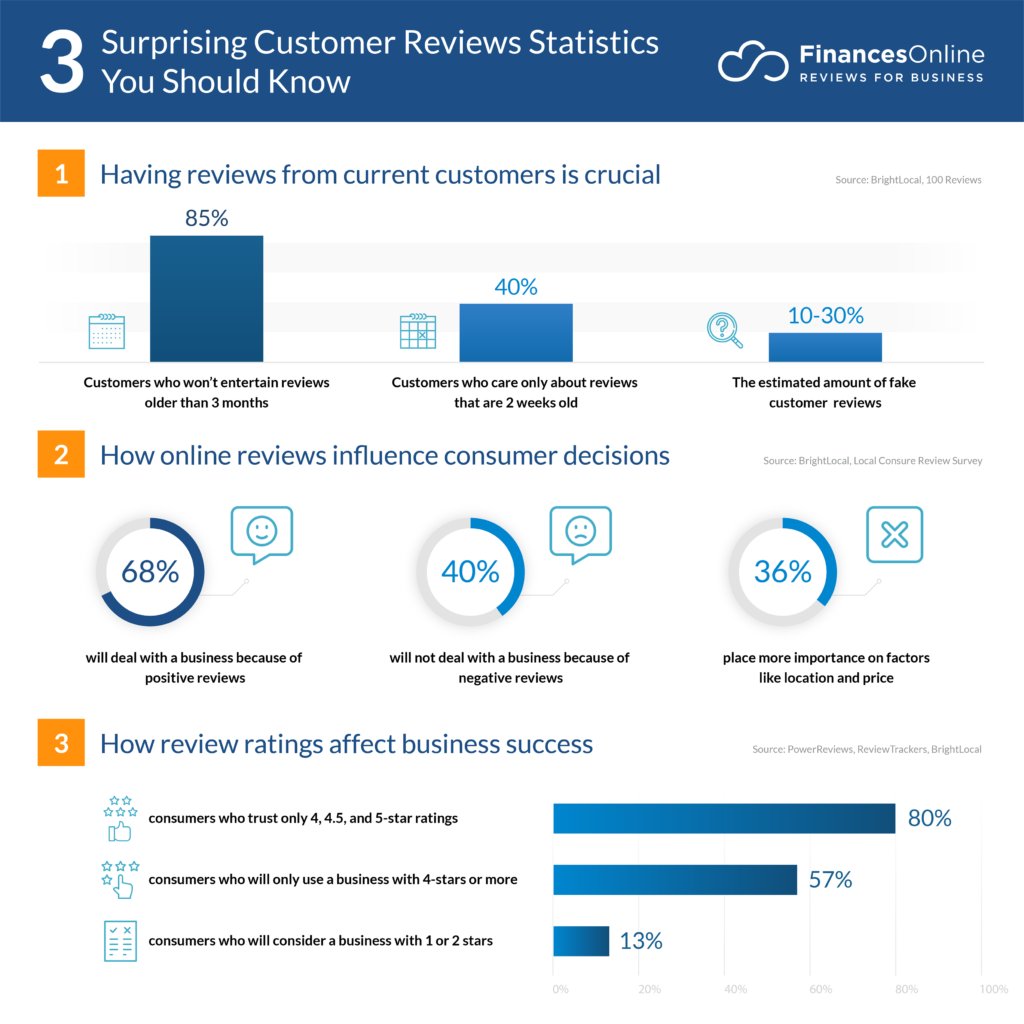
FINITE: Thanks Kristina, those are some very actionable steps! What are the key ingredients to maintaining a strong HR Tech marketing strategy?
1. Build a team of ambitious talent
For startups, people are the key for success. It is crucial that a startup team is ambitious, self-driven, and motivated to achieve great things. When building your marketing team, make sure that you clearly communicate your startup culture because not every person can thrive in a startup environment.
Make sure that you bring people who are ready to experiment, try new things, who are agile, adaptable, and who are ready for continuous self-education.
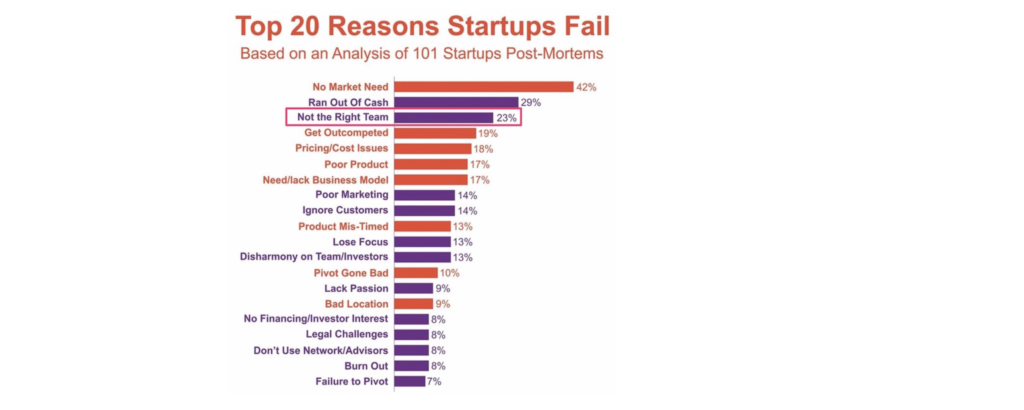
💡 Extra tip: Look for people who are ambitions about the HR space or who already have experience working in the HR Tech world. People who don’t seem to be interested in the field are less likely to make a big impact on your company.
2. Set OKR
Setting your marketing objectives and key results (OKR) is extremely important to stay focused and give concrete guidance to your marketing team. Those marketing OKR should tie back to the bigger picture and support the ultimate business goals.
💡 Extra tip: Here are some great marketing OKR examples and a guide for setting marketing OKR.
3. Experiment, measure, and improve
I love marketing because most of its activities can be tracked and measured. Hence, you should never be afraid to experiment with new tactics and campaigns as long as you track their performance and learn something new.
Based on such insights, it is much easier to make smarter decisions for improvement.
For example, using Google Analytics, you could track data around what kind of content generates most conversions or free trials (depending on your KPIs). Based on the results, you can better plan for your future content strategy that best alignes with the ultimate business goals.
💡 Extra tip: Many marketing tools enable you to do A/B testing. Use this feature to test the performance of your newsletter, social posts, ads, and more.
4. Stay aligned with your sales and product teams
This one is challenging, yet crucial for scalability and success. After a year and half at Semos Cloud, we are still working on perfecting alignment between sales and marketing.
Transparency and continuous feedback is very important here. Sales needs to inform marketing about what kind of marketing activities ars bringing the most opportunities, and sales needs to give feedback on what customers’ and prospects’needs ad challenges are.
Here is why this alignment is so important:
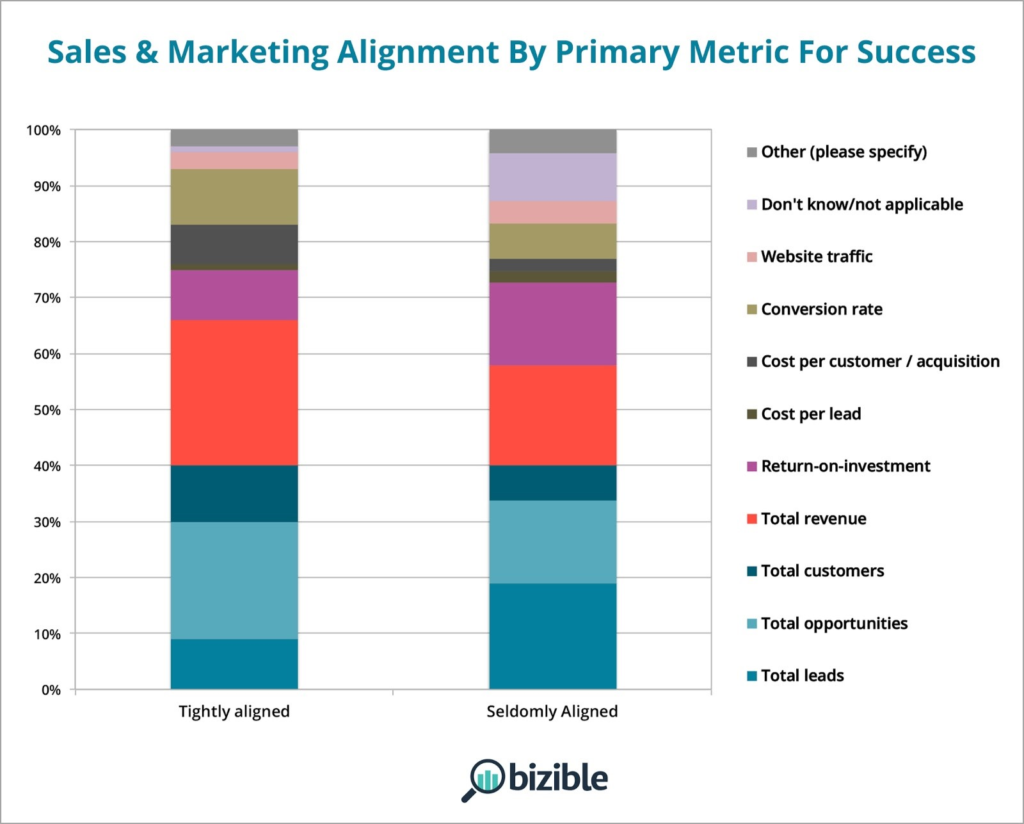
Sales needs to give feedback to the product team about prospects’ desired features, and the product team needs to keep marketing informed about the new features and functionalities.
💡 Extra tip: A simple kanban or project management solution such as Trello or BoardFlo can help you make all the teams’ activities and priorities more transparent and visible to everyone.
5. Make friends in the industry
This is probably the most important tip I have to share with you. It was truly eye-opening to me when I realized what can be achieved if your engage in collaborative marketing efforts.
You know that there are thousands of HR Tech solutions today. Many of them are not your competitors but are targeting the same buyer personas. HR Tech startups should come together and help each other grow by cross-promoting each other.
This strategy can go a long way in reaching much wider audience, building brand awareness, and generating many more leads.
💡 Extra tip: Here is an example of an eBook we did while I was in TalentLyft. We reached out to various recruitment tech providers, made a simple downloadable piece of content and all together started generating incredible amount of leads.
6. Build relationships with HR Tech analysts
If you have an innovative product, there is a chance you may get HR Tech analysts’ attention. This is not easy to achieve, but it’s worth trying because their words are trusted by hundreds of thousands HR professionals across the world.
After almost a year of trying to get Josh Bersin’s (the world’s leading HR analyst) attention, we finally got his attention, and we are just getting ready to pitch. Wish us luck! 💪
FINITE: Finally, what is the biggest challenge HR Tech is facing currently, and how do you tackle it?
Kristina: The HR Tech market is extremely competitive. There are new startups emerging all the time, and this trend will continue to grow.
According to research, the global human resource management market is expected to grow at a compound annual growth rate of 11.7% from 2020 to 2027 to reach USD 38.17 billion by 2027.
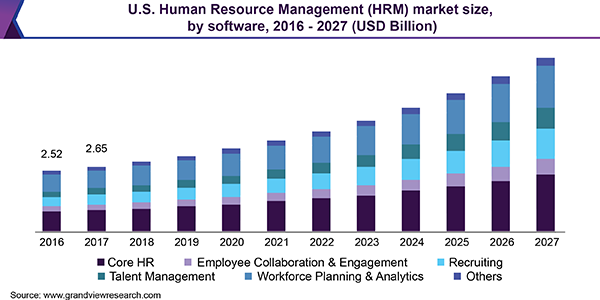
This is not so surprising as the nature of work is constantly changing and technology, with the focus on AI, is getting more and more sophisticated to solve the biggest challenges HR professionals face today.
As Joe Monaghan, a principal at Mercer, said to Human Resource Executive,
“As we move to post COVID-19, it is likely that HR will continue to improve HR technologies to further enable online learning and career development, feedback and engagement, hiring and onboarding, and many other key functions.”
Therefore, with more than 4,000 HR Tech providers worldwide, presenting your technology as a leading player can seem daunting.
This is why marketing teams, in collaboration with product and sales teams, also have to impact future product roadmaps. If you are a marketer, you have hopefully already done comprehensive competitive research. You should be familiar with your competitors’ products and understand how specific features mitigate the biggest HR challenges.
Ultimately, you should be one of the biggest drivers for product development in your organization and then communicate how your product differentiates from other solutions.
P.s. If you need a tip or two to kickstart you HR Tech Marketing strategy, reach out to me on LinkedIn 😊 Good luck everyone!
FINITE: Thank you so much for this focussed guide to building and maintaining an HR Tech marketing strategy Kristina. We greatly appreciate you sharing your insights and deep understanding of HR Tech.
Keep an eye out for the next edition of the FINITE HR Tech Interview Series!
In the meantime, check out Building a world-class B2B marketing team and Brand building in a new category, which were part of our FinTech Interview Series.
